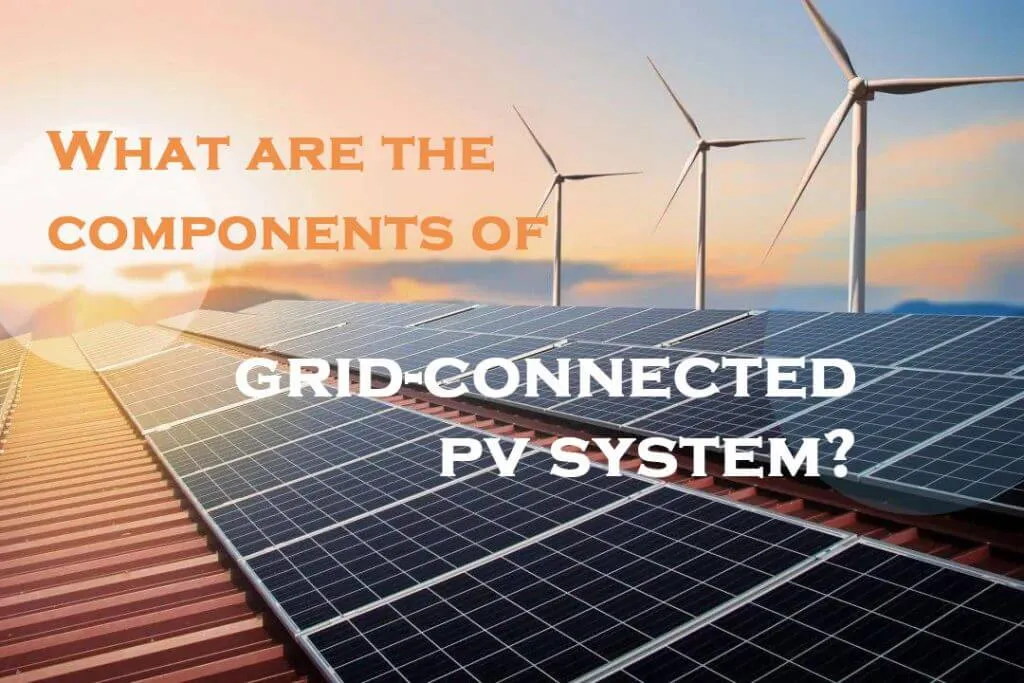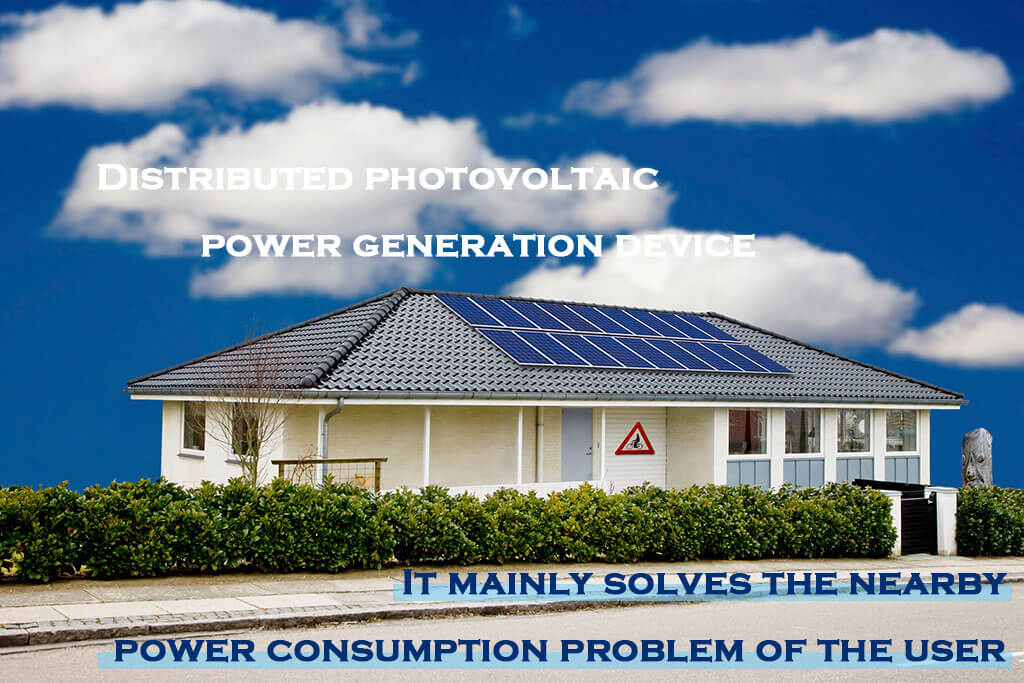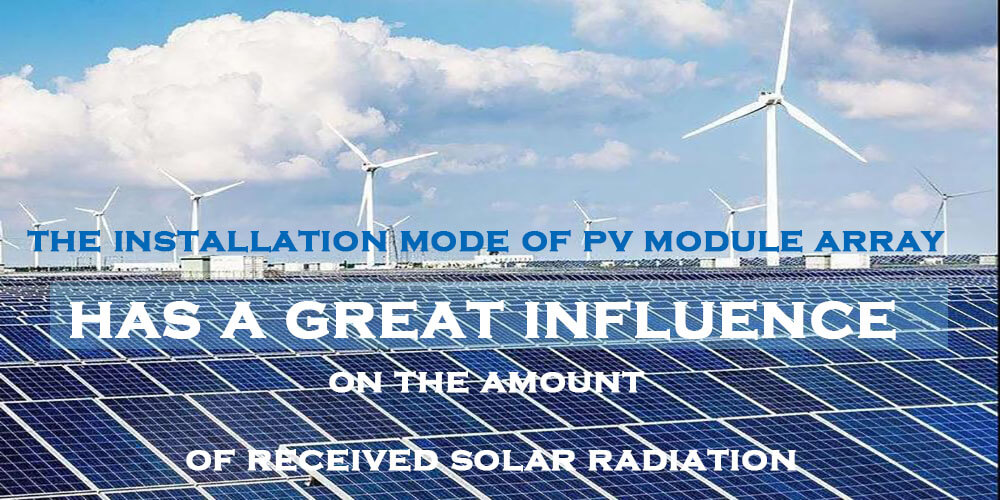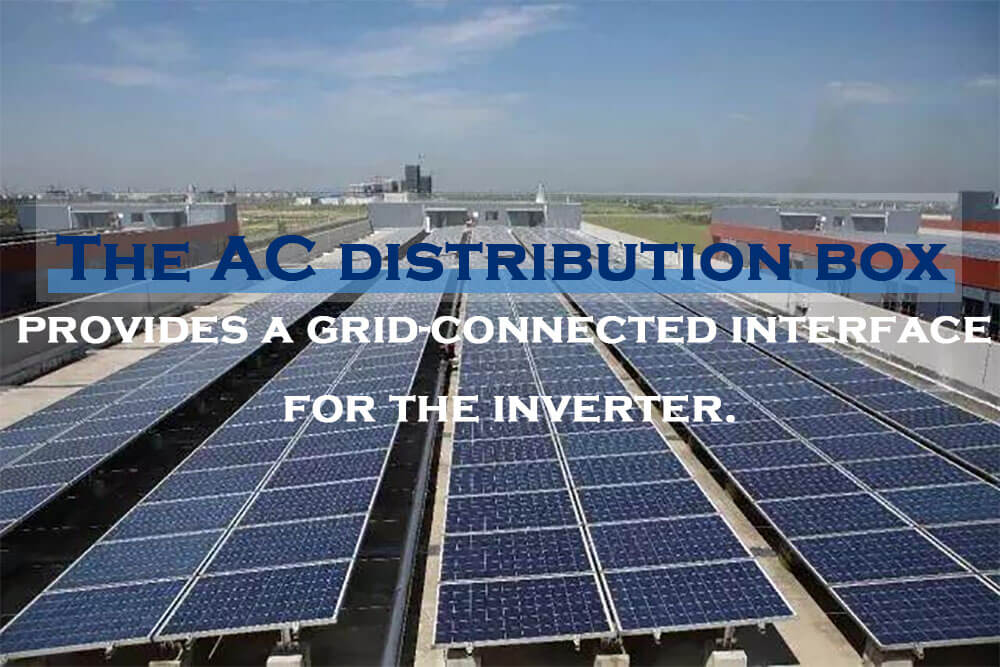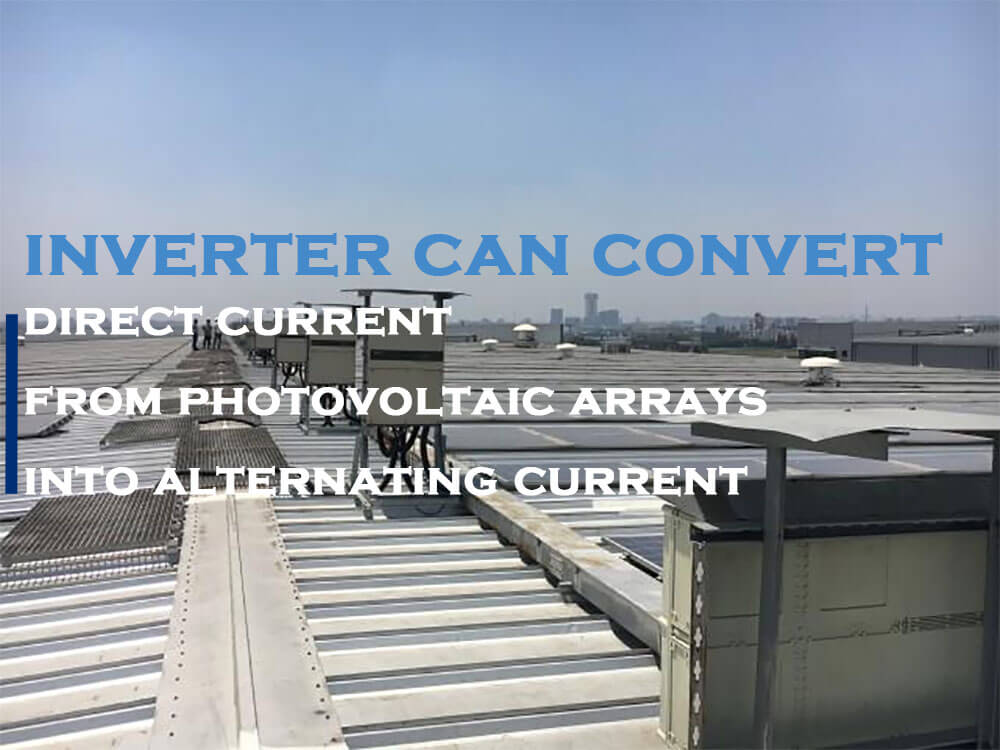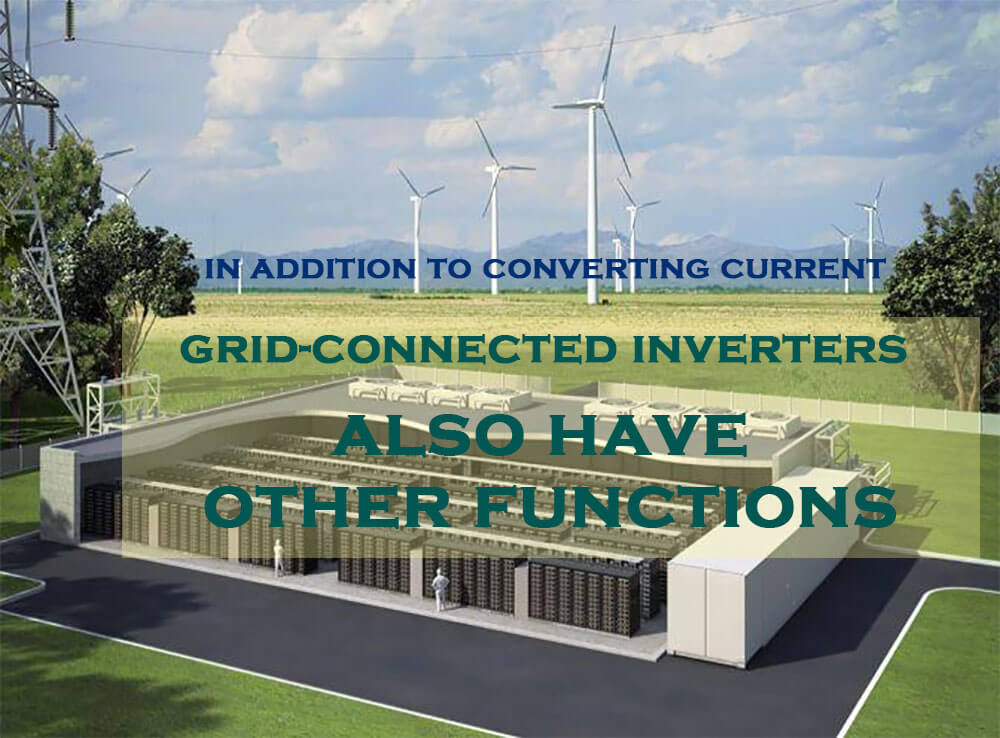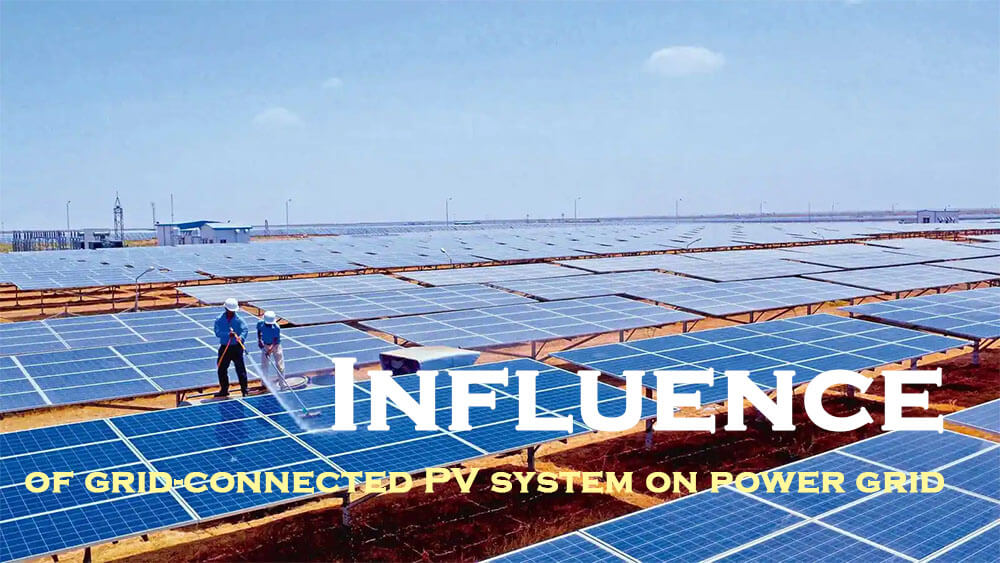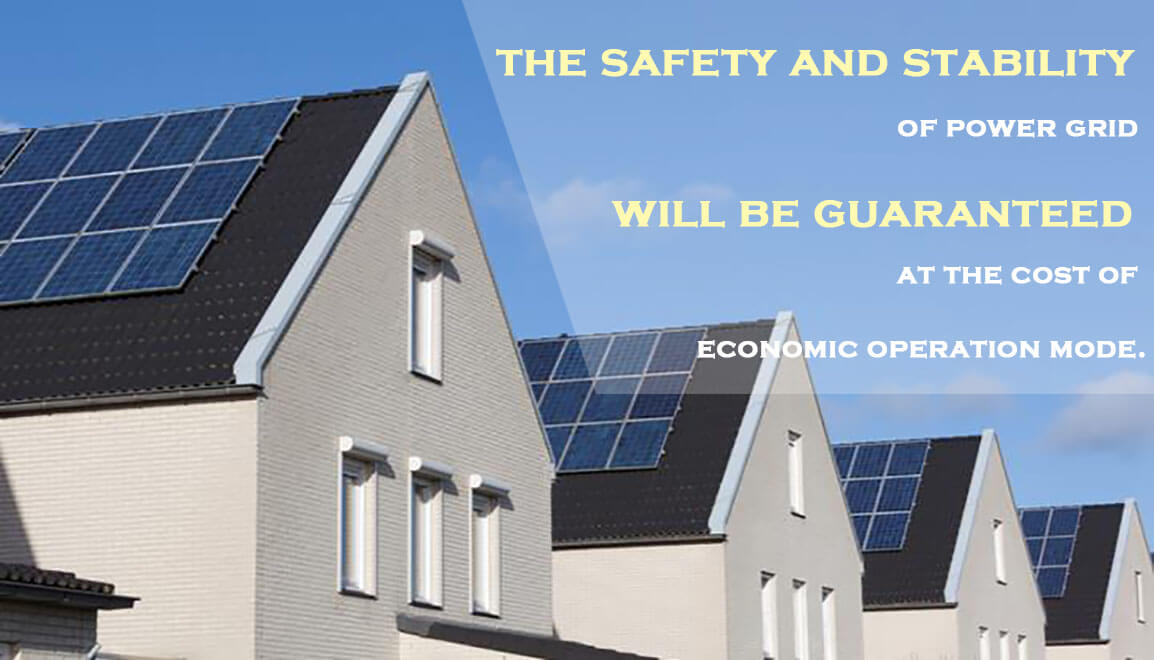Home » Grid-connected PV system » What are the components of grid-connected PV system?
What are the components of grid-connected PV system?
Grid-connected photovoltaic system(on-grid photovoltaic system) is a system that connects solar photovoltaic system with power grid. As a renewable energy generation method, which is depends on natural conditions, grid-connected PV system requires technology and is not familiar to most people. So this article will introduce you the types and the components of grid-connected PV system, grid-connected inverter and other question about grid-connected PV system.
Types of grid-connected PV system
Grid-connected PV system includes distributed grid-connected and centralized grid-connected.
Distributed grid-connected
Distributed photovoltaic power generation device is a power generation device installed on the user side by the user. It mainly solves the nearby power consumption problem of the user, reduces the dependence on power supply from the grid, and then realizes the compensation and transmission of power supply difference through grid-connection. That is to say, the electricity emitted in sunny days is also output to the grid in addition to its own use. When the self-generating electricity (including the electricity contained in the battery) is not enough, electricity is introduced from the grid for supplementary use. Some distributed photovoltaic power plants do not have batteries and use the grid to supply power when photovoltaic power is insufficient.
The photovoltaic modules of distributed photovoltaic are usually built on the surface of buildings, effectively reducing the footprint of photovoltaic power stations. The capacity of distributed photovoltaic power generation devices is generally not large (10kW to 20kW), so the operation is flexible, and it can also run independently from the power grid when necessary. Distributed grid connection is now commonly used in household solar power systems, such as solar battery home storage system… And you can read a detailed instruction about how to build a solar power energy storage systems in our website.
Centralized grid-connected
Centralized grid-connected PV system refers to a large-scale photovoltaic power station built by using desert areas and relatively stable solar energy resources. After combining many photovoltaic modules with inverters, 380V three-phase AC power is output, and then connected to high voltage transmission grid through power transformer boost.
Centralized grid-connected PV system power generation system has large scale, relatively stable output and high power generation efficiency. It can adjust the peak of power consumption in the daytime when photovoltaic power generation capacity is strong. Centralized control can easily carry out reactive power control, voltage control and power grid frequency regulation. The disadvantage is that long-distance transmission lines may be needed to access the network; The technology of combination and management of multiple converter is not mature yet. Centralized grid connection is generally used by large solar power plants of governments, enterprises and organizations.
The components of grid-connected PV system
In a large grid-connected photovoltaic power station, solar photovoltaic module array uses its photoelectric characteristics to convert solar energy into electric energy, which is output in the form of direct current, converted into three-phase AC power with lower voltage by three-phase inverter (DC-AC), and then converted into AC power that meets the voltage requirements of the public grid through boost transformer and connected to the public grid.
Photovoltaic panels
By a number of photovoltaic components, photovoltaic modules in mechanical and electrical assembly in a certain way, and a fixed support structure composed of DC power generation unit. In the design of photovoltaic power generation system, the installation mode of photovoltaic module array has a great influence on the total amount of solar radiation received by the system, thus affecting the power generation capacity of photovoltaic power generation system. There are two types of photovoltaic array installation: fixed and tracking.
Convergence box
Wiring device to ensure orderly connection and convergence function of photovoltaic modules. The device can ensure that the photovoltaic system is easy to separate the circuit during maintenance and inspection, and reduce the scope of power outage when the photovoltaic system fails.
DC distribution box
DC distribution box is mainly connected to the DC cable output from the convergence box, and then connected to the grid-connected inverter. The power distribution box contains dc input circuit breakers, leakage protectors, anti-reflection diodes, photovoltaic lightning protectors and other major components, which ensure that the system is not damaged by leakage, short circuit, overload and lightning impact, and effectively ensure the operation of load equipment, while facilitating customer operation and maintenance.
Grid-connected inverter
A device that converts direct current to alternating current. Including voltage control, internal power supply, error amplification, self-protection device, etc. According to whether with transformer can be divided into transformer – free and transformer – type. The maximum efficiency for transformerless inverters is 98.5%. For transformer inverter, the maximum efficiency is 97.1%.
AC distribution box
The AC distribution box provides a grid-connected interface for the inverter through power distribution. It is operated by circuit breakers. It contains a lightning arrester on the grid side, and is equipped with a grid-connected interface for the power generation meter inverter and an AC voltage ammeter.
AC/DC cables
DC cables include: bushing box to DC lightning protection distribution cabinet; Dc lightning protection PDC to grid-connected inverter. AC cable includes: grid-connected inverter to AC lightning protection distribution cabinet; Ac lightning protection distribution cabinet to boost transformer; Boost transformer to grid access point. Viii. Monitoring and communication devices realize the functions of power generation equipment operation control, power station failure and data collection and maintenance, and coordinate with power grid dispatching to improve the automation level, safety and reliability of power stations, and help reduce the impact of photovoltaic power generation on the power grid. The hierarchical distributed structure is adopted in the supervision and control system architecture.
The inverter of photovoltaic grid-connected system
Grid-connected inverter is the core component and key technology of grid-connected photovoltaic power generation system. It can convert direct current from photovoltaic arrays into alternating current.
In general, in addition to converting current, grid-connected inverters also have the following functions:
(1) Automatic switch. According to the sunshine conditions from sunrise to sunset, the potential of the output power of the photovoltaic array is maximized to realize automatic start and stop within this range.
(2) Maximum Maximum Power Point Tracking (MPPT). Under the conditions of different external temperature and solar illumination intensity, the photovoltaic array can keep the maximum power output as far as possible.
(3) Suppress the inflow of high harmonic current into the power grid and reduce the impact on the power grid.
(4) Prevent the operation of isolated islands. Power cut occurred at the system location, but the output voltage of the inverter did not change because the photovoltaic power generation continued to supply power. At this point, the power cut can not be detected normally, once the call comes back, it may cause an accident, this situation is called the island operation. To protect equipment staff from injury, the grid-connected inverter needs to have this function.
(5) Automatic voltage adjustment. Since a large number of solar photovoltaic systems are connected to the power grid, the surplus electric energy of the solar photovoltaic system will be sent to the power grid at the same time on sunny days, which will increase the voltage of the power grid and lead to the decline of power supply quality. In order to keep the voltage of power grid normal, the output voltage of grid-connected inverter should be prevented from rising automatically during operation. However, for the solar photovoltaic system with small capacity, almost no voltage rise will be caused, so this function is generally omitted.
(6) Troubleshooting abnormal conditions and stopping operation. When the power grid or inverter of the system is faulty, find out the abnormality in time and control the inverter to stop running.
Conditions for grid-connected PV system
To realize grid-connection, first of all, the phase sequence on both sides of the grid-connection should be the same, and the voltage, phase and waveform should be as consistent as possible, mainly including: the output voltage of grid-connected inverter is equal to the voltage of the power grid, and the pressure difference should be within 10%;The output frequency of grid-connected inverter is the same as that of the power grid, and the frequency difference is no more than 0.3Hz; The output voltage of the grid-connected inverter is the same as that of the power grid, and the phase difference should be consistent as far as possible. Therefore, different from ordinary inverters, grid-connected inverters need to control the frequency, voltage, current, phase, active and reactive power, and power quality of the converted AC power, so that the voltage and frequency of the converted AC power are consistent with the voltage and frequency of the AC power of power grid.
Influence of grid-connected PV system on power grid
Since solar photovoltaic power generation is an energy with low energy density, poor stability and poor regulation ability, the power generation is greatly affected by weather and region. And the grid-connected power generation will have a certain impact on the safety, stability, economic operation and power supply quality of the power grid. How much impact is still unclear. Because at present there is no mathematical model of photovoltaic power generation system in power grid power flow and stability calculation. We know that electricity cannot be stored cheaply on a large scale at present, nor will it be in the foreseeable future. This makes the application of photovoltaic power generation limited by physical factors, but also by geographical constraints. But with the development of technology and market, When the online electricity quantity of photovoltaic power generation is in a comparable order of magnitude with that of thermal power plants, hydroelectric power plants, nuclear power plants and other power plants and becomes a non-negligible part of the power grid, the photovoltaic power generation will be on the existing power generation mode and it will bring the grid technology, economy, policy, and environmental benefits with the following questions:
- Impact of load peaks and valleys on power grid. Since grid-connected PV system does not have the ability of peak and frequency regulation, it will impact the early peak load and late peak load of power grid. Since the increased power generation capacity of grid-connected PV systempower generation system cannot reduce the ownership or redundancy of generator sets in the power system, the power grid must prepare corresponding rotating spare sets for photovoltaic power generation system to solve the peak adjustment problem of early peak and late peak. The grid-connected PV system generation system supplies power to the grid at the cost of the decrease of unit utilization hours. That, of course, is not what power producers want.
- Diurnal variation. Time difference between east and west and seasonal change on power grid. Due to the periodicity of sunlight and load, the increase in grid-connected pv generation capacity does not reduce the demand ofcapacityfor installed grid.
- Changes in meteorological conditions. When the grid-connected photovoltaic rooftop power generation in a city reaches a certain scale, the grid will provide sufficient regional rotating spare units and reactive power compensation capacity for the grid-connected photovoltaic power generation system to control and adjust the frequency and voltage of the system if there is a significant change in geography and meteorology. In this case, the safety and stability of power grid will be guaranteed at the cost of economic operation mode.
- Long-distance photovoltaic energy transmission. When grid-connected PV systempower generation becomes economically and technically possible to transmit power over long distances, it will bring new stability problems to AC power grid due to the absence of rotary inertia governor and excitation system. If grid-connected PV systempower generation becomes large-scale and adopts high-voltage AC and DC power transmission, it will bring stability and economic problems to the AC system. (The transmission lines specially used for grid-connected PV system power generation will form constraints on the utilization of desert solar energy due to low efficiency. Transmission lines used to transfer power from grid-connected PV system power generation systems, or both, are uneconomical due to low load rates.) grid-connected PV system power stations must be equipped with automatic reactive voltage regulator regardless of high voltage AC or DC transmission. As for the influence on power grid stability, there is no mathematical model (including power supply model and load model) for photovoltaic power generation in power grid stability calculation. It is not clear how much impact the grid-connected photovoltaic power generation will have on the safe and stable operation of the grid.
- Consumption reduction. One of the main advantages ofgrid-connected PV systempower generation is that it can replace the consumption of fossil fuels. Since grid-connected PV system power generation increases the rotational reserve or thermal reserve of the generator in the power plant, the actual consumption reduction ratio of grid-connected PV system power generation should deduct the energy lost by the rotational reserve unit or thermal reserve unit. The efficiency reduction of grid-connected PV system power generation should take into account the efficiency loss caused by the reduction of unit utilization hours of the power generation company due to the power provided by the grid-connected PV system power generation system.
- Environmental protection. It remains to be discussed whether the emission reduction effect brought by photovoltaic power generation should only consider the sulfur dioxide and carbon dioxide emitted by thermal power generation. Because when grid-connected PV systempower generation is connected to the grid, the power grid also considers the safety, stability and economic operation of the grid, and often reduces the output of not only thermal power plants. Therefore, when considering the rotation backup, It is not only hydropower stations that undertake the task of rotary reserve (hydropower plants also lose water energy when they undertake the task of rotary reserve). Therefore, when considering the emission reduction contribution of grid-connected PV systempower generation system, a coefficient less than one should be multiplied before the theoretical value. The effect of energy saving and emission reduction is not as optimistic as most people think.

